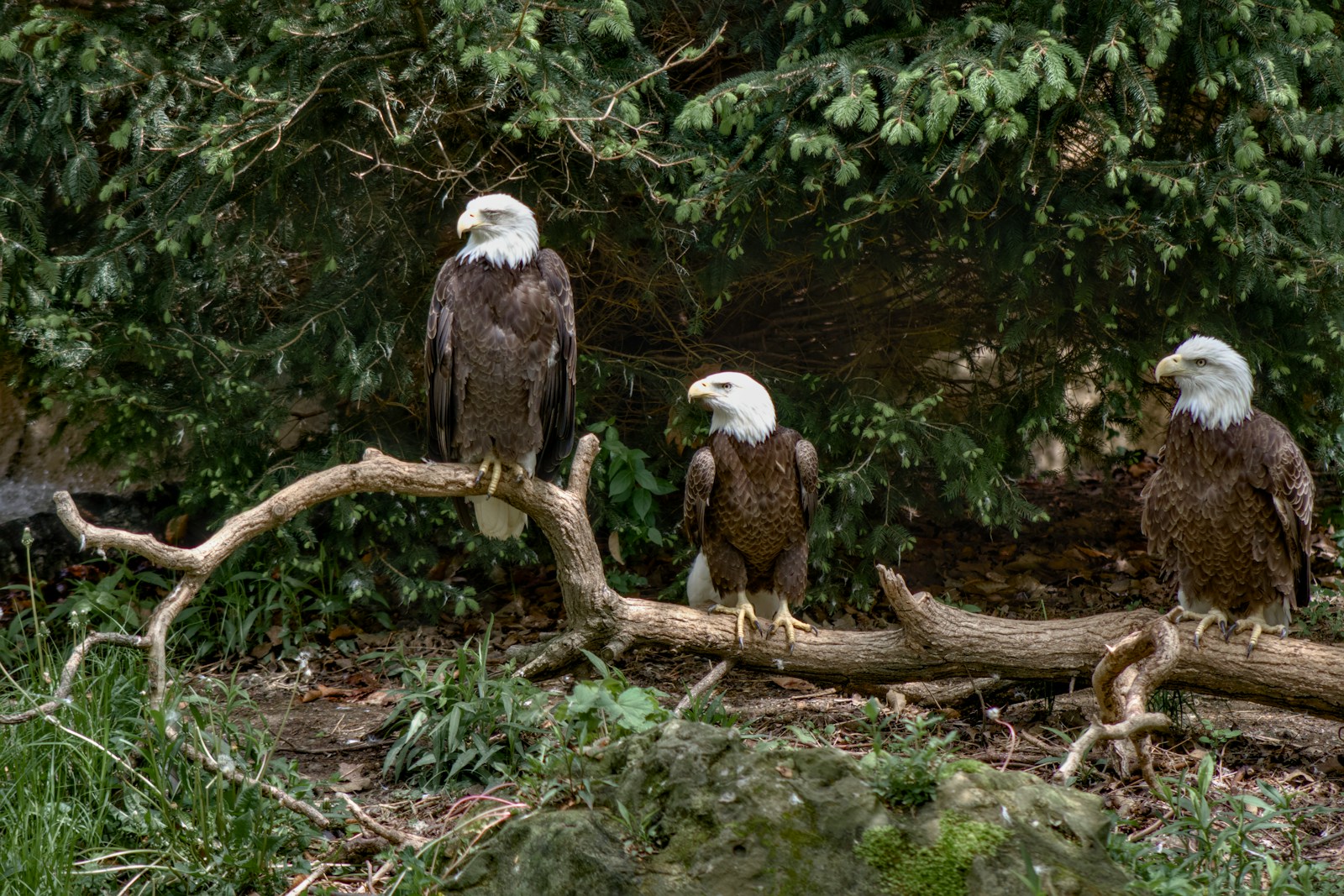The bald eagle, America’s national bird, represents freedom, strength, and the wild spirit of North America. With its distinctive white head, powerful yellow beak, and massive wingspan, this apex predator commands our attention and respect. Few sights in nature match the breathtaking spectacle of a bald eagle diving toward water at speeds of up to 100 miles per hour to snatch a fish with its powerful talons. Beyond their hunting prowess, these magnificent birds undertake remarkable seasonal migrations, navigating across vast territories with precision that has fascinated ornithologists for generations. This article explores the extraordinary hunting techniques and migration patterns of the bald eagle, offering insight into their remarkable adaptations and behaviors that have allowed them to flourish across North America.
The Anatomy of a Perfect Hunter
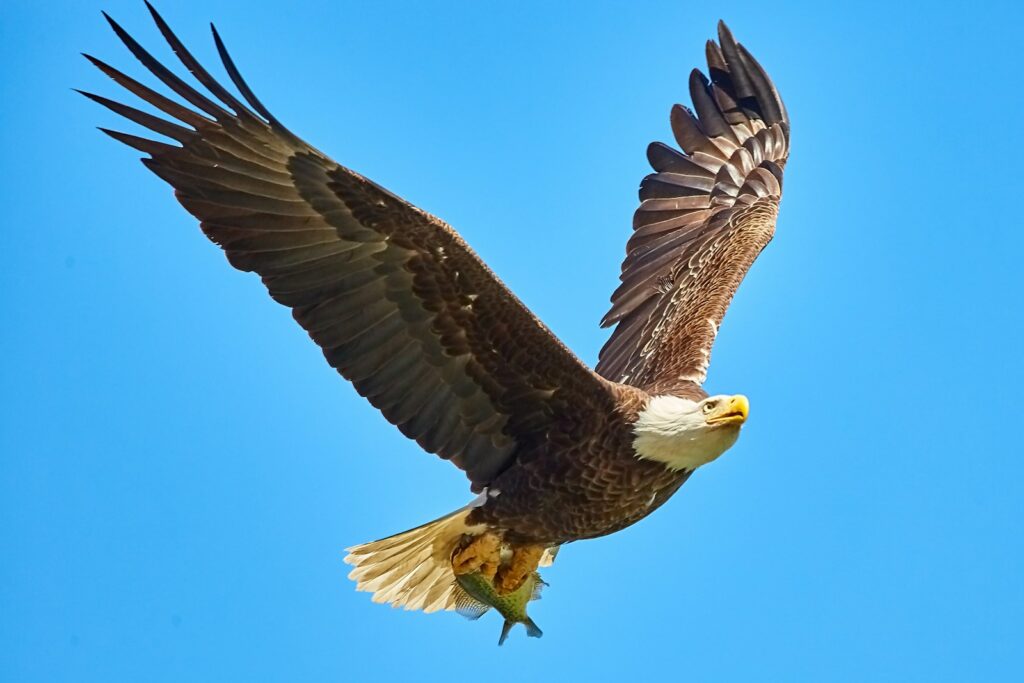
Bald eagles possess physical adaptations that make them formidable predators in their ecosystems. Their wingspan, typically ranging between 6 and 7.5 feet, allows them to soar effortlessly on thermal currents while scanning extensive areas for potential prey. Their renowned visual acuity enables them to spot a fish swimming beneath the water’s surface from heights of up to 1,000 feet—vision that’s estimated to be four to eight times stronger than human eyesight. The eagle’s talons, equipped with specialized scales and sharp, curved claws measuring up to two inches long, can exert pressure of approximately 400 pounds per square inch when gripping prey. These physical attributes combine with their aerodynamic bodies and highly specialized feather structure to create nature’s perfect aerial hunting machine.
Masters of the Water Hunt
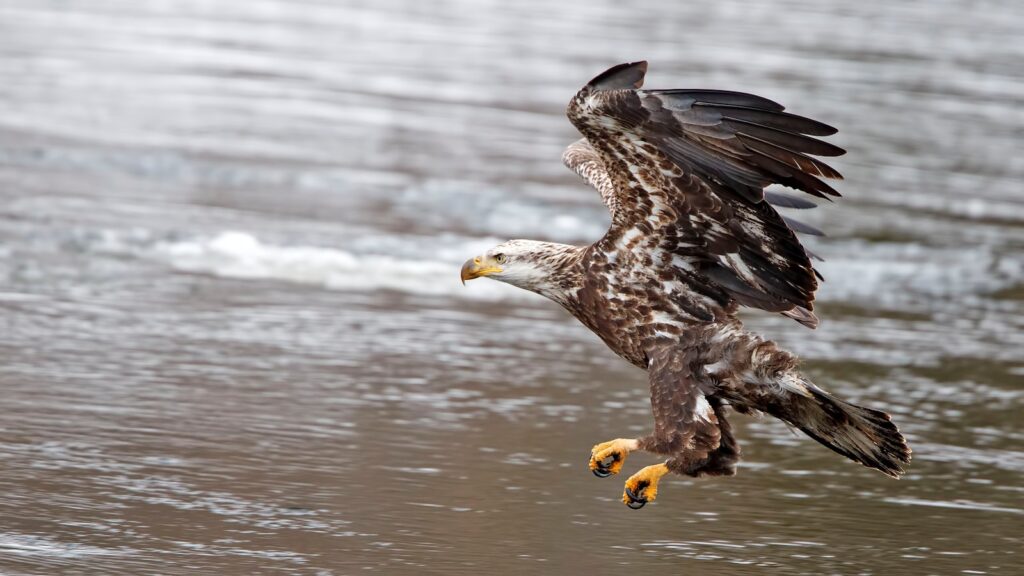
Fishing represents the bald eagle’s primary hunting strategy, showcasing their remarkable precision and calculation. When hunting over water, eagles typically soar at heights of 100-200 feet, using their exceptional vision to detect fish swimming near the surface. Once prey is spotted, the eagle begins a controlled descent, gradually picking up speed before extending its talons forward at the last moment. This hunting technique requires split-second timing, as the eagle must penetrate only a few inches below the water’s surface to grasp the fish. Studies show that experienced eagles achieve success rates of up to 90% when conditions are favorable, making them among the most efficient fish hunters in the bird world. Interestingly, eagles prefer to catch fish weighing between 1-3 pounds—large enough to provide substantial nutrition but not so large as to prevent the bird from gaining altitude after capture.
Opportunistic Hunting Strategies
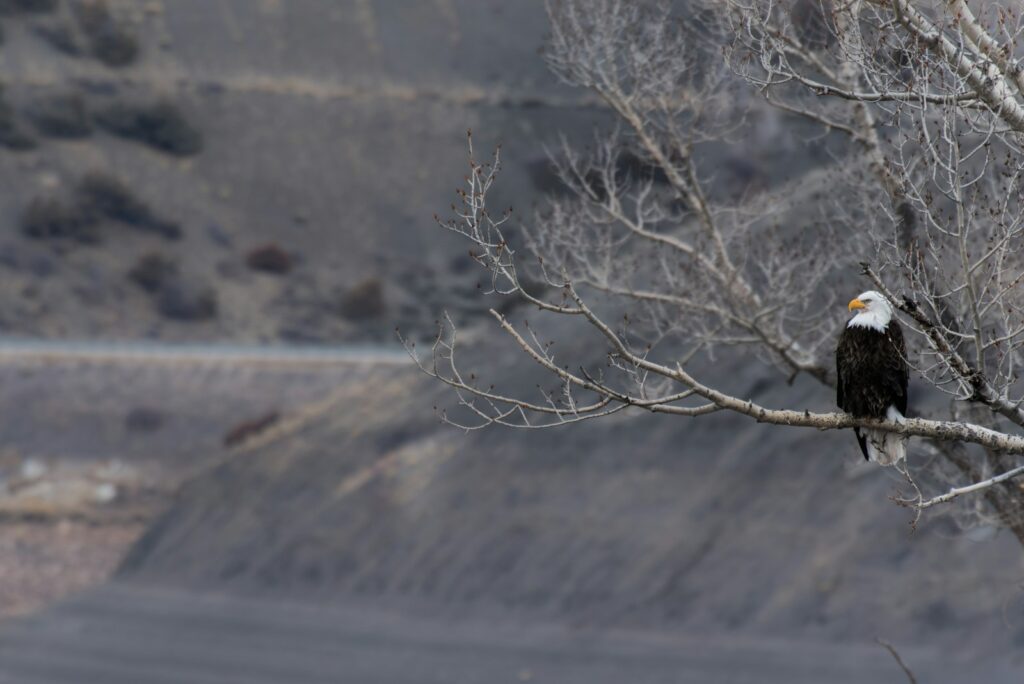
While fish constitute approximately 60-90% of the bald eagle’s diet, these adaptable predators employ diverse hunting tactics depending on food availability and seasonal changes. Eagles readily scavenge carrion, particularly during winter months when fishing becomes difficult due to ice cover. They’re also known to harass other birds like ospreys and herons, forcing them to drop their catches in a behavior known as kleptoparasitism. In coastal areas, bald eagles hunt waterfowl by flying low over water to flush birds into flight, then pursuing and capturing them mid-air. During salmon runs, eagles may wade into shallow streams, using their wings for balance while grabbing fish with their talons. This behavioral flexibility has contributed significantly to the bald eagle’s recovery from near-extinction in the mid-20th century, allowing them to adapt to changing environmental conditions and food availability.
The Cooperative Hunting Phenomenon
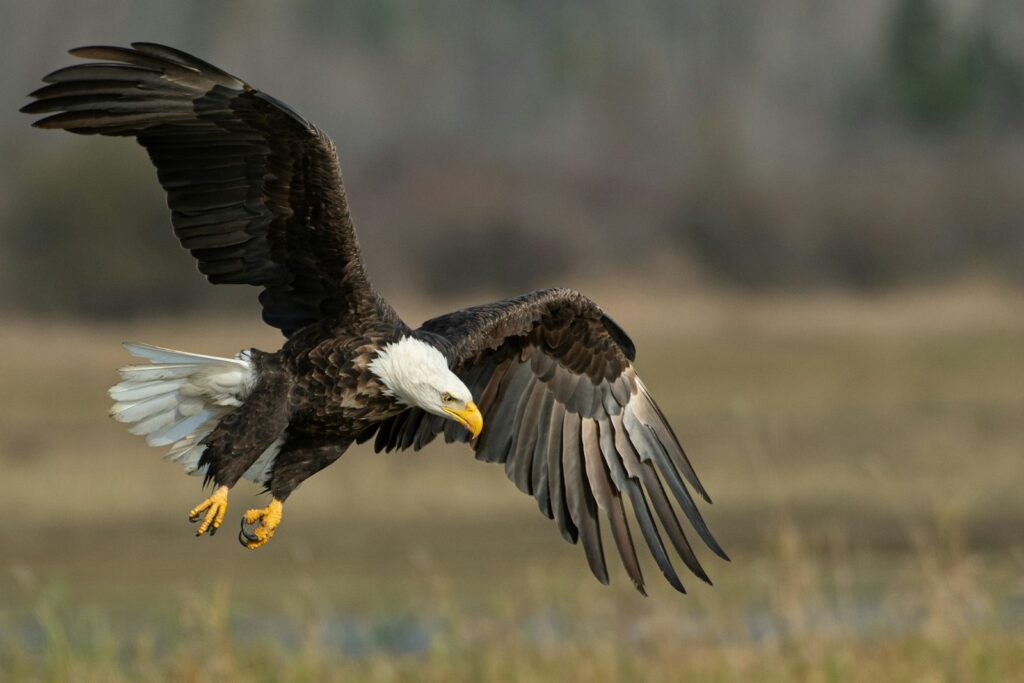
Though primarily solitary hunters, bald eagles occasionally engage in cooperative hunting behaviors that demonstrate their cognitive sophistication. During winter congregations near abundant food sources like salmon runs, pairs or small groups of eagles have been observed working together to increase hunting efficiency. One eagle may deliberately flush waterfowl toward waiting companions or create disturbances that drive fish into shallower water where they become more vulnerable to capture. Mated pairs frequently hunt cooperatively, with one bird distracting potential prey while the other executes the attack. Research indicates that these cooperative strategies can increase hunting success by up to 30% in certain environments, particularly when targeting larger prey like waterfowl or when hunting in complex terrain. These social hunting behaviors represent some of the most advanced cooperative techniques observed in raptors.
Seasonal Migration Patterns
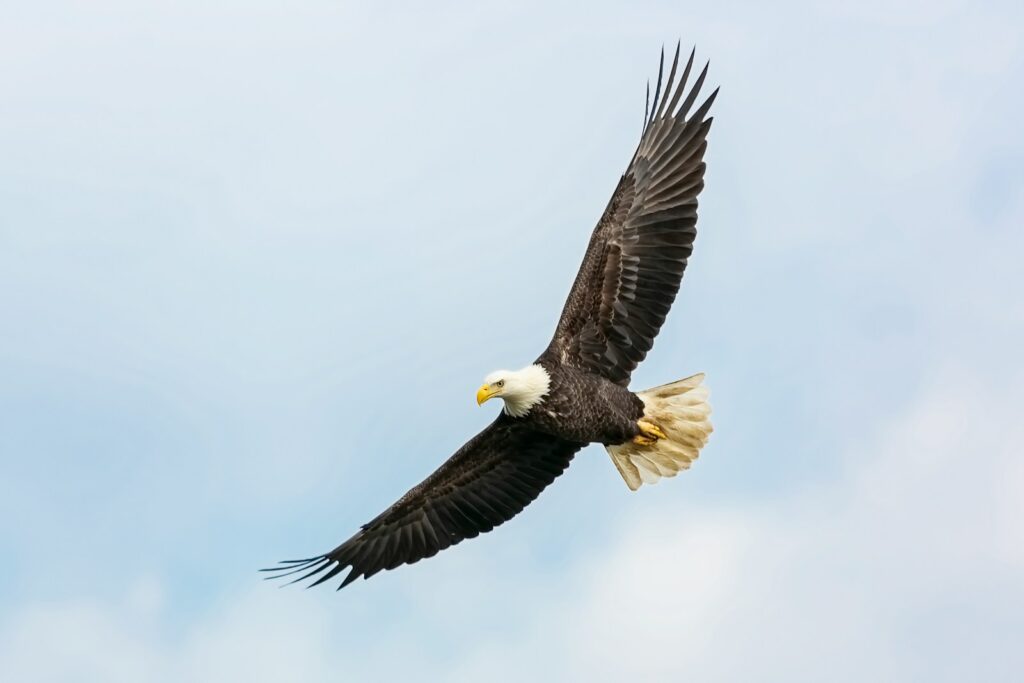
Bald eagles exhibit complex migration patterns that vary significantly based on geographic location, age, and food availability. Northern populations breeding in Alaska and Canada typically migrate southward as winter approaches and waterways freeze, preventing access to fish. Tracking studies have documented individual eagles traveling distances exceeding 1,700 miles between summer breeding grounds and winter territories. Southern populations, particularly those in Florida and the Gulf Coast, tend to be non-migratory or exhibit short-distance movements influenced by local food abundance. Interestingly, migration patterns often change throughout an eagle’s lifetime, with younger birds generally traveling greater distances than older, established adults. Research using satellite tracking has revealed that many eagles demonstrate remarkable fidelity to both breeding territories and wintering grounds, returning to the same locations year after year with navigational precision that continues to astonish scientists.
Navigation Abilities During Migration
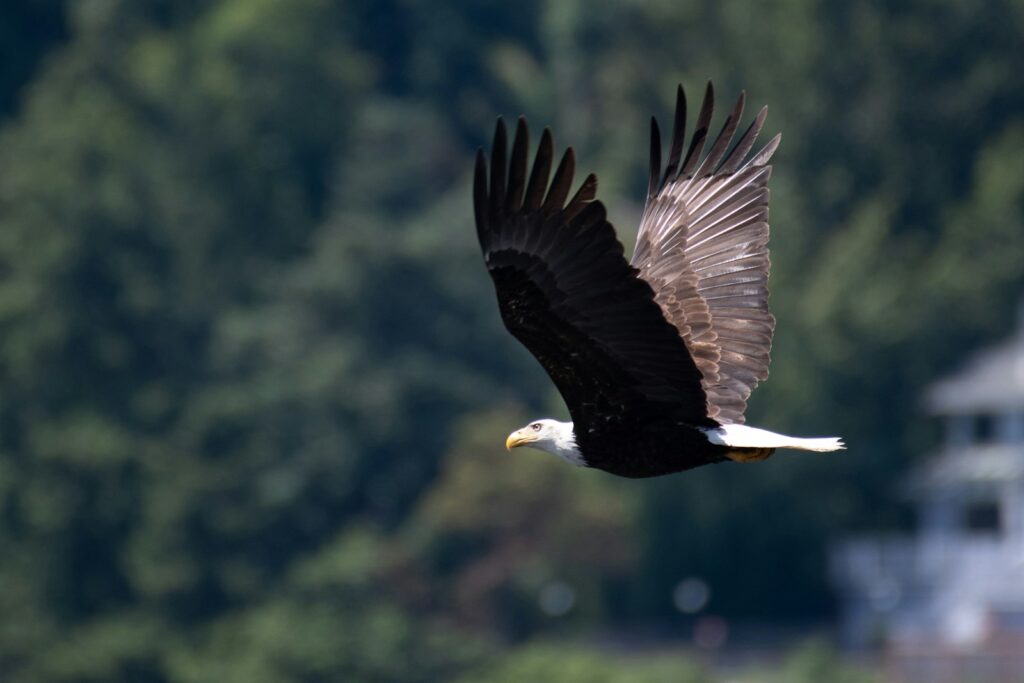
The navigational capabilities of migrating bald eagles represent one of their most remarkable adaptations. Eagles rely on a combination of visual landmarks, celestial cues, and possibly Earth’s magnetic field to orient themselves during long-distance travel. High-resolution GPS tracking has shown that eagles often follow precise flyways, particularly along mountain ridges, coastlines, and river valleys where they can exploit thermal updrafts to conserve energy. Unlike some migratory birds that travel in large flocks, eagles typically migrate individually or in loose associations, sometimes gathering temporarily at locations with abundant food. Research indicates eagles possess cognitive maps of their territories spanning hundreds of miles, allowing them to return to specific trees and nesting sites with extraordinary accuracy. Even more impressive, young eagles undertaking their first migration without parental guidance can successfully navigate to traditional wintering grounds, suggesting an innate genetic component to their navigational abilities.
Energy Conservation During Flight
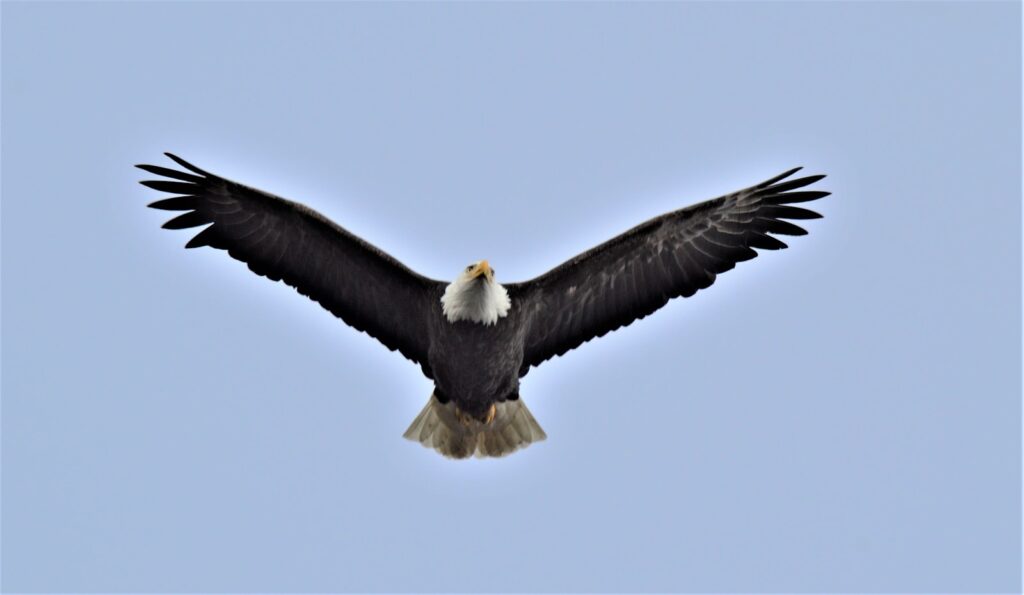
Bald eagles have evolved sophisticated flight techniques that maximize energy efficiency during both hunting and migration. Rather than continuous flapping, which consumes substantial energy, eagles primarily use soaring flight, taking advantage of rising air currents called thermals. By circling within these invisible columns of warm air, eagles can gain altitude with minimal effort, sometimes climbing thousands of feet before gliding long distances. During migration, eagles strategically position themselves along geographic features that generate reliable updrafts, such as mountain ridges and coastal cliffs. Researchers studying eagle flight patterns have documented daily flight distances exceeding 200 miles during migration, with birds typically traveling between 25-35 mph while cruising. Most remarkably, thermal-soaring allows eagles to cover these distances while expending minimal energy—studies estimate they can reduce energy expenditure by up to 70% compared to continuous flapping flight.
Communal Winter Gatherings
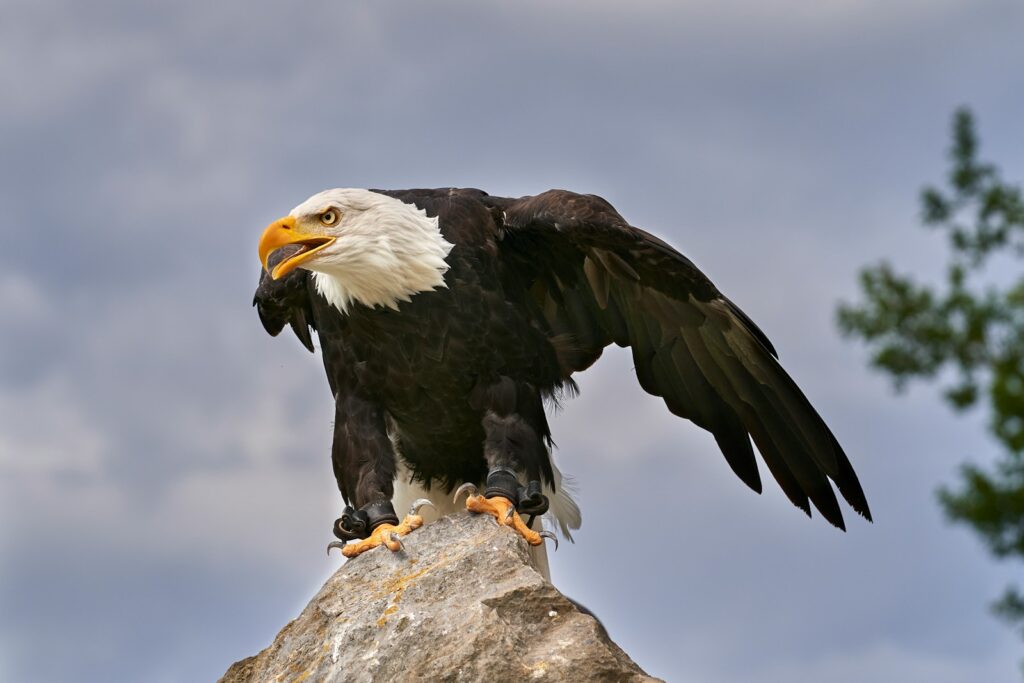
One of nature’s most spectacular eagle phenomena occurs during winter months when bald eagles congregate in large numbers at locations with abundant food sources. The Chilkat River in Alaska hosts one of North America’s largest concentrations, where over 3,000 eagles gather during late salmon runs that remain accessible due to geothermal springs preventing the river from freezing. Similarly, hundreds of eagles converge along the Mississippi River where open water below dams provides winter fishing opportunities. These gatherings serve multiple purposes beyond feeding, including potential mate selection and information exchange about food resources. Despite their normally territorial nature, eagles at these congregations establish temporary social hierarchies, with dominant birds securing prime fishing locations while younger eagles often resort to scavenging or stealing. These gatherings provide critical survival advantages during winter’s harsh conditions and represent important conservation priorities for maintaining healthy eagle populations.
Breeding Territory and Nest Building
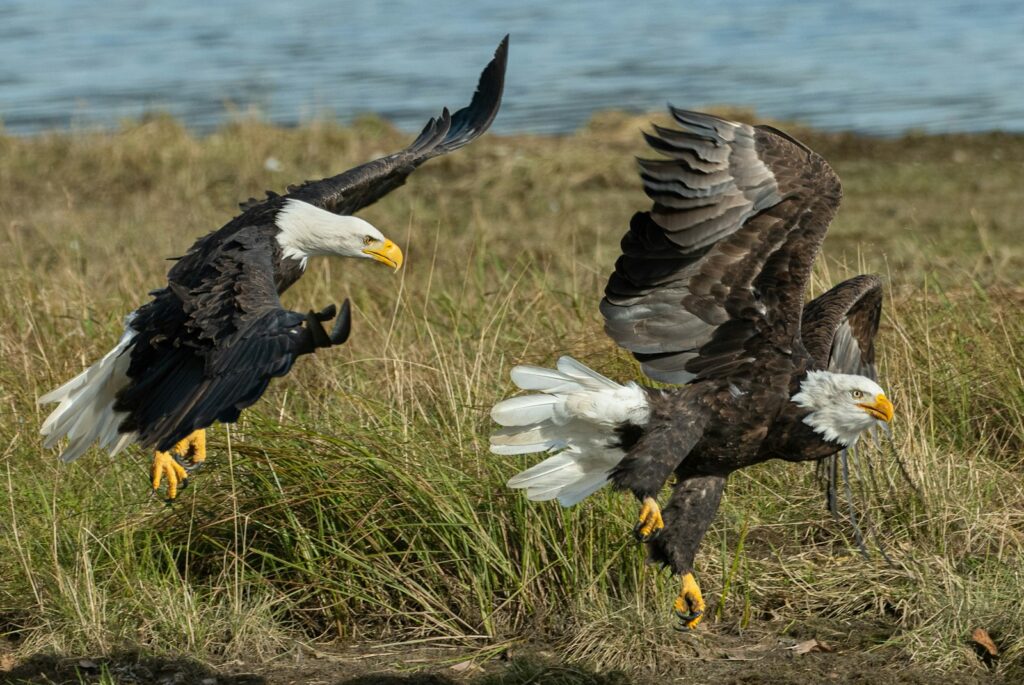
After winter migration, bald eagles return to breeding territories where they engage in elaborate nest construction that directly supports their hunting lifestyle. Eagles typically select tall trees with commanding views of surrounding hunting grounds, particularly near productive fishing waters. The massive nests, called eyries, average 4-5 feet in diameter and 2-4 feet deep, though nests used for multiple years can reach extraordinary dimensions—the largest documented eagle nest measured 9.5 feet in diameter, 20 feet deep, and weighed over two tons. Both males and females participate in nest construction, gathering sticks up to 2 inches in diameter and 3 feet in length, which they interweave to create the nest’s foundation. The interior is lined with softer materials including grass, moss, feathers, and even seaweed in coastal areas. These carefully constructed platforms serve as both nurseries for eaglets and staging areas for hunting, with adults often consuming portions of prey at the nest before feeding their young.
Hunting Adaptations for Parenthood
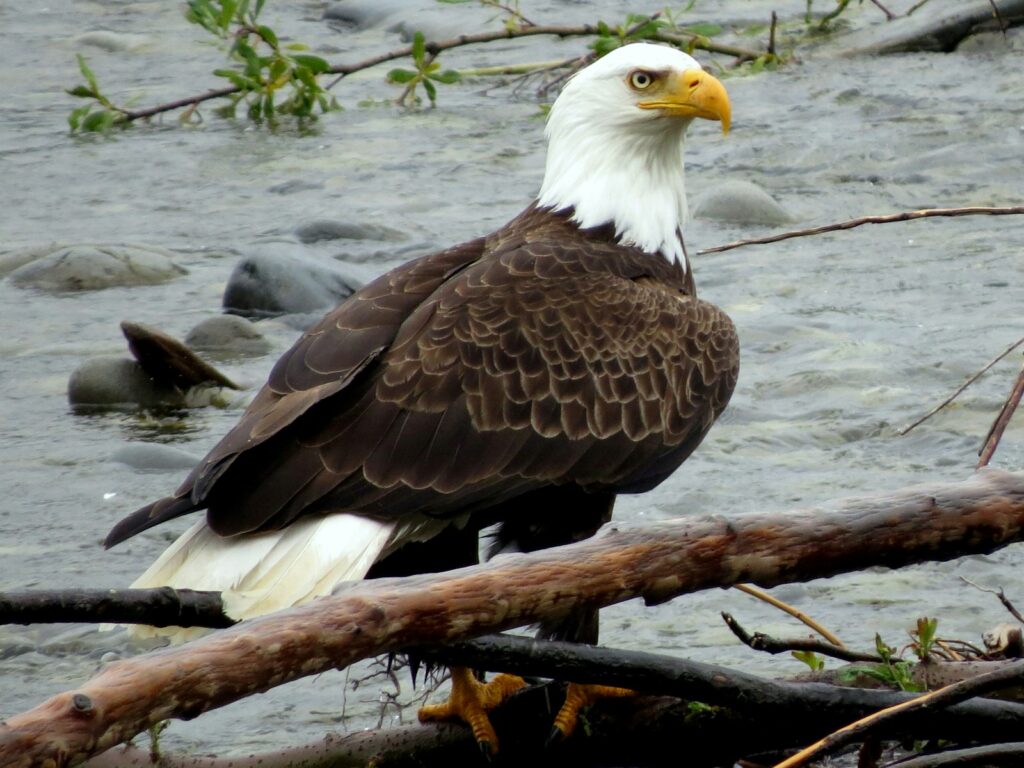
The arrival of eaglets dramatically transforms the hunting behavior of adult bald eagles. During nesting season, eagles must increase their hunting efficiency to satisfy the voracious appetites of growing offspring, with studies showing that a nesting pair with two eaglets may need to provide up to 5 pounds of food daily. Parents typically modify their hunting strategies to prioritize reliability over opportunity, often focusing on predictable food sources even if they’re less abundant. Division of labor frequently emerges, with males specializing in catching smaller, more numerous prey while females capture larger items that provide more substantial meals. Interestingly, researchers have documented increased scavenging behavior during nesting season, likely because carrion represents a dependable food source requiring less energy expenditure than active hunting. The hunting pressure of parenthood is so significant that many eagles establish territories near multiple food sources, providing alternatives when primary hunting grounds become depleted.
Climate Change and Eagle Adaptations
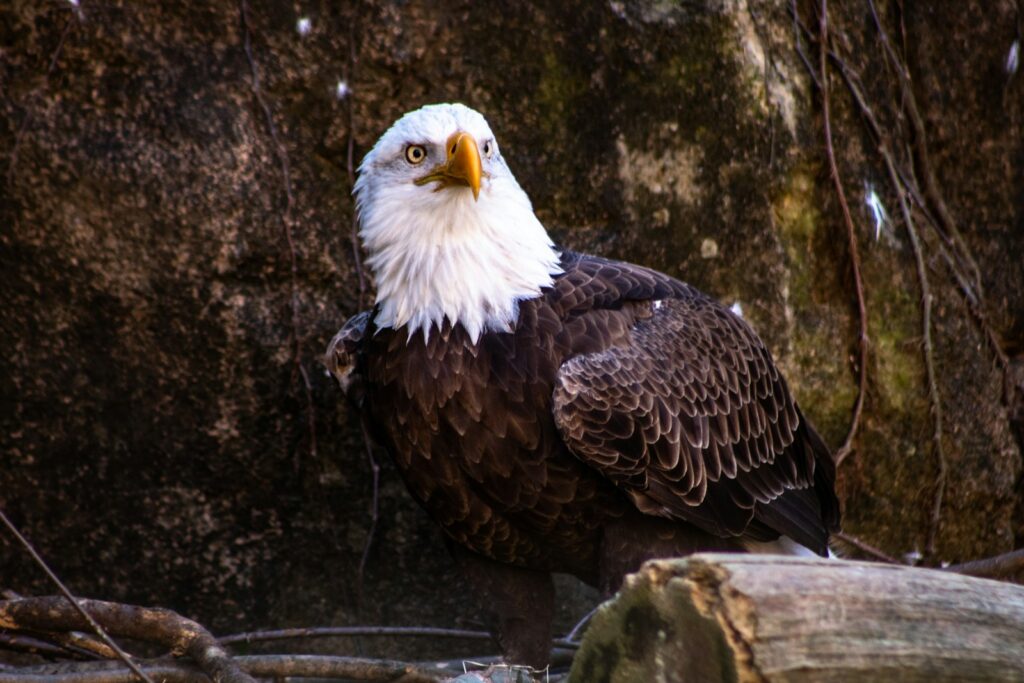
Climate change is altering traditional patterns of eagle hunting and migration in ways that demonstrate both their vulnerability and adaptability. Warming temperatures have shifted the timing of fish spawning runs and waterfowl migrations, forcing eagles to adjust their hunting strategies and breeding schedules accordingly. In northern regions, earlier spring thaws have advanced nesting timelines by as much as two weeks compared to historical records. Increasingly unpredictable weather patterns, including more frequent storms and flooding events, can destroy nests and disrupt hunting opportunities during critical breeding periods. However, eagles are showing remarkable behavioral plasticity in response to these changes, with northernmost populations shifting toward less migratory behavior as winters become milder and food remains accessible year-round. Research tracking eagles across North America suggests that while climate change poses significant challenges, the species’ intelligence and adaptability may allow them to adjust more successfully than many other wildlife species.
Conservation Success and Ongoing Challenges
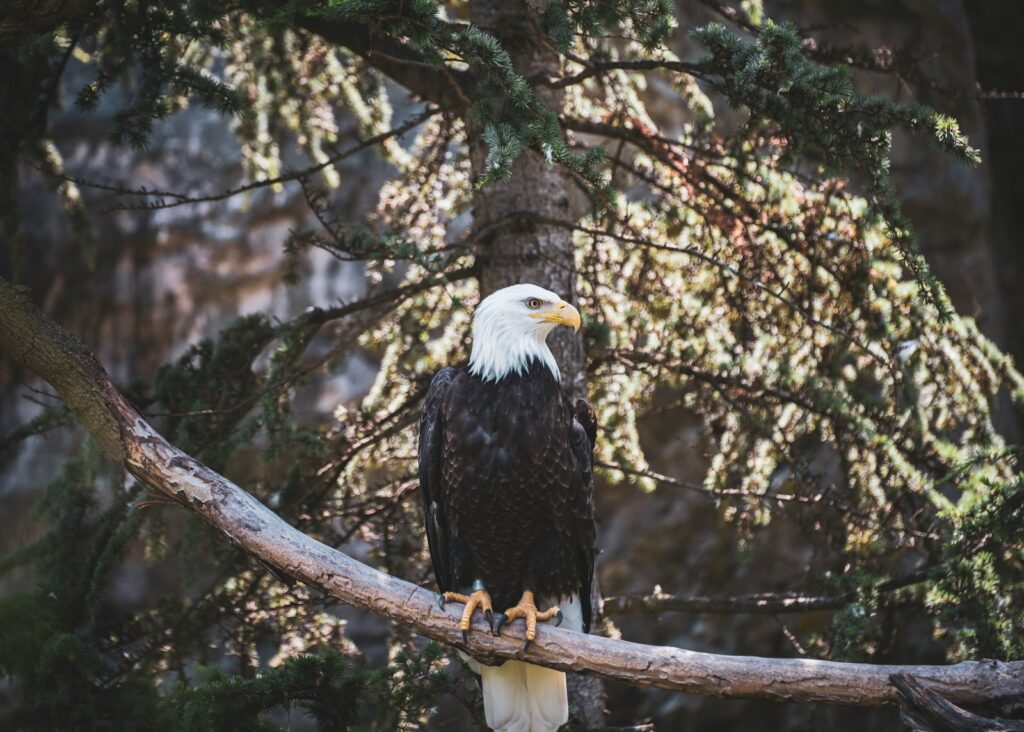
The bald eagle represents one of wildlife conservation’s greatest success stories, recovering from fewer than 500 nesting pairs in the 1960s to over 70,000 birds today. This remarkable comeback followed the 1972 ban on DDT, which had caused thinning of eagle eggshells, along with habitat protection and enforcement of anti-poaching laws. However, eagles still face significant challenges that affect their hunting and migration patterns. Lead poisoning remains a persistent threat, primarily from eagles consuming hunting ammunition fragments in gut piles or wounded game. Collisions with power lines and wind turbines pose increasing risks, particularly along migration corridors. Habitat loss continues as waterfront property development reduces nesting sites and fishing territories. Despite these challenges, the eagle’s conservation success demonstrates how society can effectively protect apex predators when combining scientific understanding with appropriate legal protections and public education.
Ecological Significance as Apex Predators
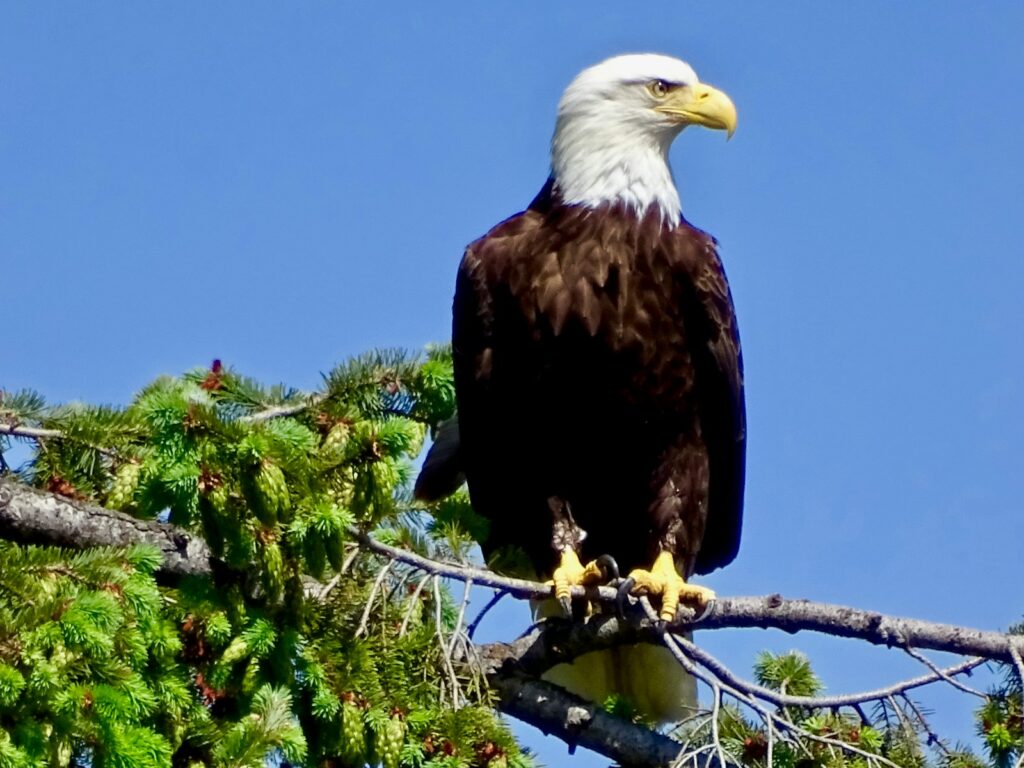
As apex predators, bald eagles play a vital role in maintaining ecological balance across diverse North American ecosystems. Their hunting activities help control fish populations, particularly targeting slower or diseased individuals that are easier to catch, potentially improving the genetic health of prey species. During salmon runs, eagles that drag fish carcasses away from streams into surrounding forests create important nutrient transfers that enrich terrestrial ecosystems. Their scavenging behavior helps clean environments of carrion that might otherwise spread disease. Eagles’ hunting territories, which can span 1,700 acres or more, often overlap with habitats of numerous other species, making eagle protection an effective umbrella strategy that simultaneously conserves habitat for countless other creatures. Research increasingly suggests that recovering eagle populations have cascading positive effects throughout food webs, demonstrating how the protection of a single charismatic species can yield broad ecological benefits.
The bald eagle’s remarkable hunting prowess and migratory journeys embody the wilderness spirit of North America. From their precision fishing dives to their continent-spanning migrations, these magnificent birds demonstrate nature’s capacity for both specialized adaptation and behavioral flexibility. As they continue to recover from near-extinction, bald eagles offer powerful lessons about wildlife resilience when given appropriate protection. Their ongoing success story reminds us that understanding and protecting the complex ecological relationships that sustain apex predators benefits not just a single species, but entire ecosystems. When we witness a bald eagle in flight—whether hunting above a pristine lake or soaring along a migratory pathway traveled for countless generations—we observe not just an individual bird, but a living symbol of conservation achievement and wild nature persisting despite enormous challenges.

